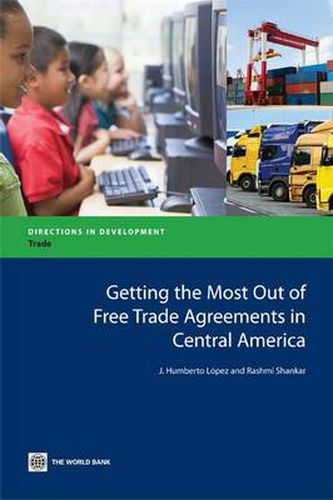Readings Newsletter
Become a Readings Member to make your shopping experience even easier.
Sign in or sign up for free!
You’re not far away from qualifying for FREE standard shipping within Australia
You’ve qualified for FREE standard shipping within Australia
The cart is loading…






Central America has put the promotion of international trade at the center of its development agenda. Over the past years the region has witnessed the successful conclusion of negotiations for a significant number of free trade agreement, most notably the Dominican Republic-Central America Free Trade Agreement (DR-CAFTA) with the US and the Association Agreement (AA) with the European Union signed in May 2010. The priority given to international trade by Central America is unsurprising. Trade is generally perceived as being both beneficial for growth and a means for advancement for developing countries. There are now plenty of positive experiences with developing countries that have anchored their development strategies around the promotion of trade. The region should be congratulated without reservations for the effort made on this front. However, the real work starts now, with the recognition that trade agreements create opportunities but do not guarantee results. Three main questions are addressed in the background papers prepared for this study. How does trade liberalization enhance the volume of trade? What is the impact of higher trade flows on growth? Is the growth associated with trade equitable and sustainable? The main conclusions of the study therefore aim to inform the ongoing policy discussion on how Central America can get the most out of its free trade agreements: a key message that emerges is that this will depend on the ability of countries to create an enabling policy and institutional environment; one that will stimulate trade flows as well as the growth impact of these flows, while ensuring that growth is inclusive and sustainable.
$9.00 standard shipping within Australia
FREE standard shipping within Australia for orders over $100.00
Express & International shipping calculated at checkout
Central America has put the promotion of international trade at the center of its development agenda. Over the past years the region has witnessed the successful conclusion of negotiations for a significant number of free trade agreement, most notably the Dominican Republic-Central America Free Trade Agreement (DR-CAFTA) with the US and the Association Agreement (AA) with the European Union signed in May 2010. The priority given to international trade by Central America is unsurprising. Trade is generally perceived as being both beneficial for growth and a means for advancement for developing countries. There are now plenty of positive experiences with developing countries that have anchored their development strategies around the promotion of trade. The region should be congratulated without reservations for the effort made on this front. However, the real work starts now, with the recognition that trade agreements create opportunities but do not guarantee results. Three main questions are addressed in the background papers prepared for this study. How does trade liberalization enhance the volume of trade? What is the impact of higher trade flows on growth? Is the growth associated with trade equitable and sustainable? The main conclusions of the study therefore aim to inform the ongoing policy discussion on how Central America can get the most out of its free trade agreements: a key message that emerges is that this will depend on the ability of countries to create an enabling policy and institutional environment; one that will stimulate trade flows as well as the growth impact of these flows, while ensuring that growth is inclusive and sustainable.